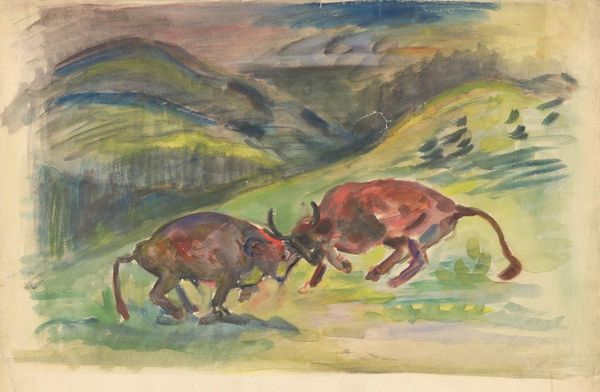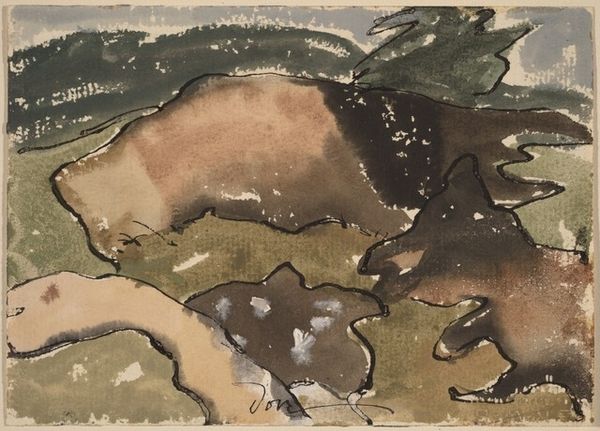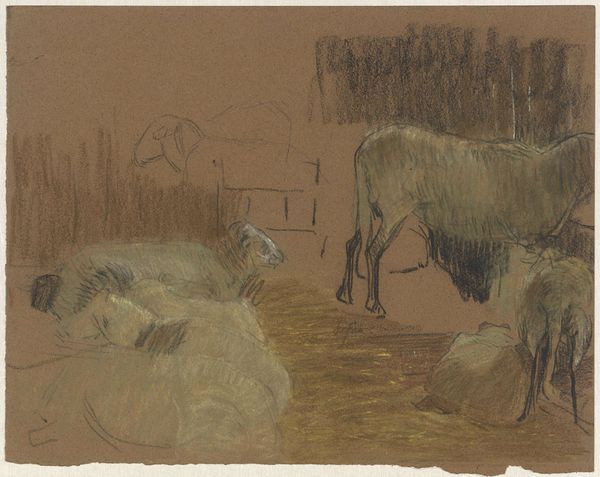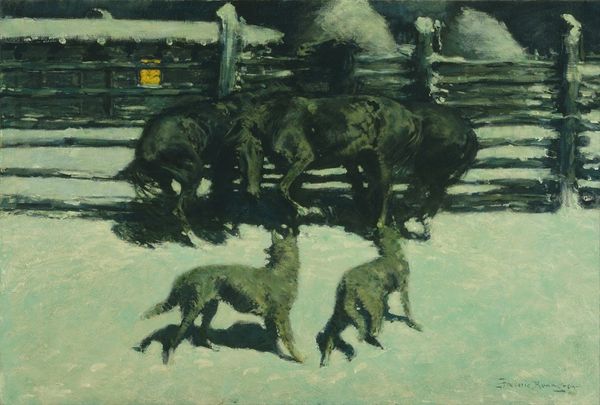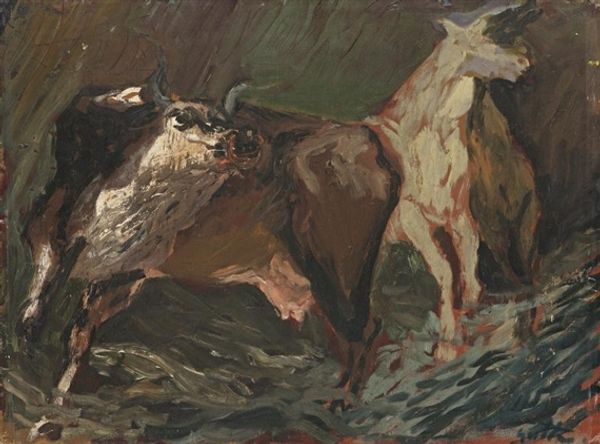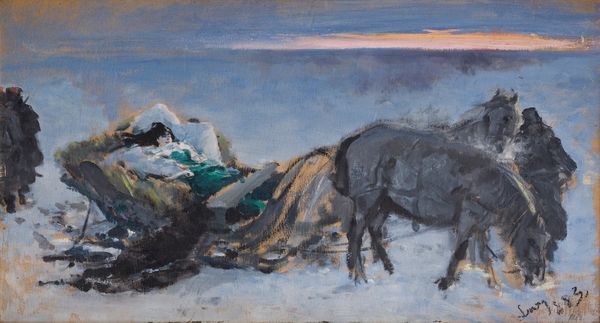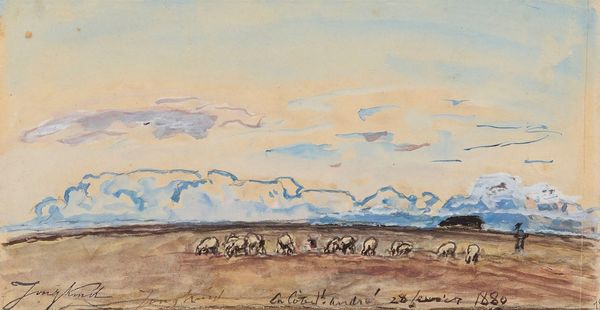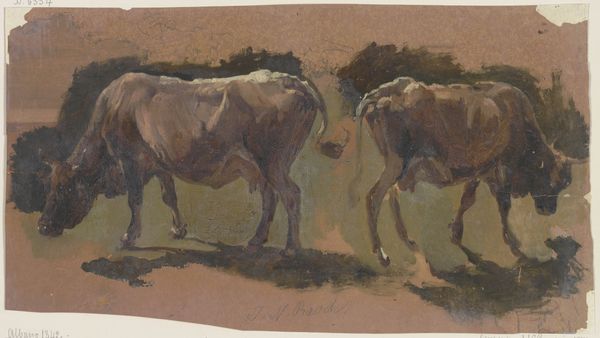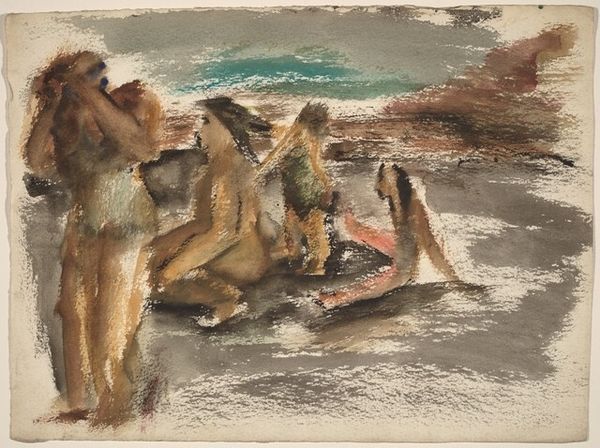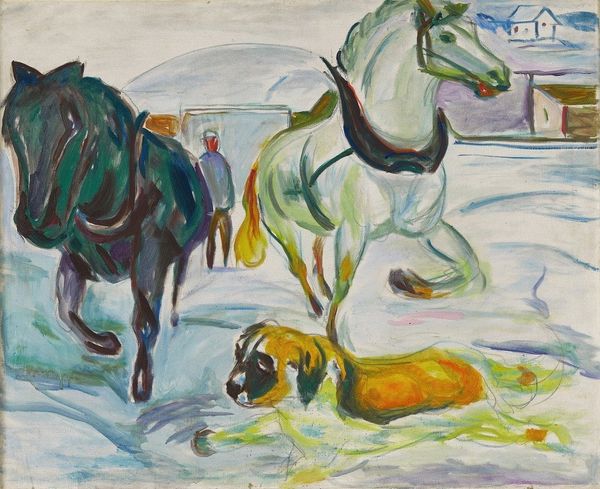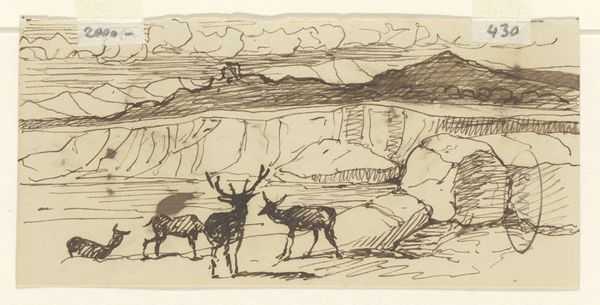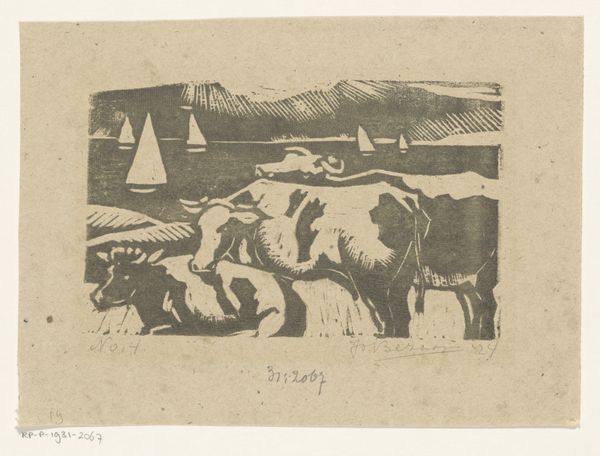
painting, watercolor
#
animal
#
painting
#
landscape
#
german-expressionism
#
figuration
#
watercolor
#
expressionism
#
watercolor
Copyright: Public Domain: Artvee
Curator: Looking at Franz Marc's "Wild Boars in the Water," created between 1910 and 1911, the initial feeling is somber, almost weighted. There's a denseness to the scene. What do you make of it? Editor: It's interesting you say weighted. To me, it speaks of the pre-war atmosphere, the weight of impending events. This image—these beasts submerged in an unnatural-looking watercolor is hardly apolitical. Curator: Yes, it certainly captures that era's tension, especially knowing Marc’s history and that of the Blaue Reiter group. You see that heavy pigment building form and notice the obvious material processes... Editor: Right! You get the clear influence of philosophies which were, at the time, deeply impacting how humans interact with one another and animals—which Marc sought to understand. But here, I find it striking—what were the implications, during the German Expressionist period, of placing boars, which, at the time, might’ve been more closely associated with food production than communion, in this context. Curator: An intriguing observation. From a purely material standpoint, it's intriguing how Marc used watercolor in such an intense, almost oil-like manner to construct such a powerful visual. What might be read through that unusual application, during a moment when landscape paintings remained entrenched in historical context? Editor: It seems a definite conscious maneuver. Expressionists had a knack for testing—straining, really—accepted techniques. So how much did they think about how they would ultimately impact painting? By presenting us with familiar subject matter that, viewed from another angle, looks almost like beasts in a purgatory, for me the larger issues emerge surrounding environmentalism. This is an era when animals could easily get swallowed whole through rapid urbanization... What does this landscape, and those specific colors, reveal about Marc's social, political, even animal advocacy aims, viewed within that frame? Curator: Excellent points about material conditions as reflections of broader societal forces. To consider watercolor, a medium usually associated with delicate studies, used to depict the raw power and maybe even vulnerability of these boars speaks volumes about Marc’s commitment. And of course, he would ultimately enlist and fall on the fields of Verdun... Editor: Absolutely, which adds yet another tragic layer to this already potent image. Understanding the era’s sociopolitical framework transforms the image to far more than a watercolor study. It is as if Marc sought to depict, materially, a sense of place within a historical epoch through wild boars, even knowing what was inevitably approaching. Curator: Precisely. It allows us to appreciate the work both for its aesthetic innovations and for its historical pertinence. Editor: An era that produced artwork to move the political goalposts—still quite crucial today.
Comments
No comments
Be the first to comment and join the conversation on the ultimate creative platform.
